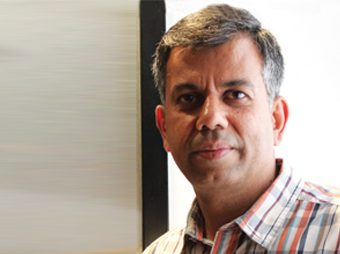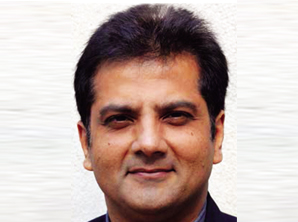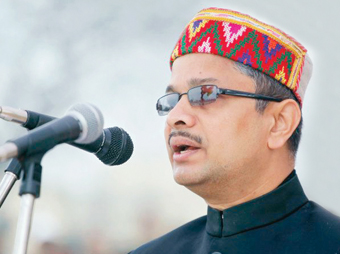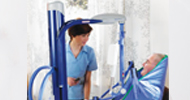
Hospitals need precise ventilation
Airflow control solutions can be installed and commissioned in an existing healthcare facility with as much ease as in a new upcoming facility

 Critical environments like hospitals need precision airflow control. Without it, there will be higher energy costs and unsafe conditions for staff and patients. Precision airflow control achieves required environment service levels such as temperature, humidity, ACPH (Air Changes Per Hour), polarity/direction of airflow. It is mandatory to have accurate and repeatable control of airflow to reduce spread of airborne pathogens.
Critical environments like hospitals need precision airflow control. Without it, there will be higher energy costs and unsafe conditions for staff and patients. Precision airflow control achieves required environment service levels such as temperature, humidity, ACPH (Air Changes Per Hour), polarity/direction of airflow. It is mandatory to have accurate and repeatable control of airflow to reduce spread of airborne pathogens.
Airflow can be categorised broadly as constant air volume (CAV) and variable air volume (VAV). Precision airflow control solutions are available for CAV and VAV applications. CAV applications are those wherein a fixed quantity of air is required at all times to meet the prescribed service levels. These are commonly applications wherein polarity / direction of airflow or ACPH is/are priority. Variable air volume applications allow for varying quantity of airflow to ensure service levels. These are common applications wherein temperature, ACPH (based on occupied/unoccupied status), is/are central to the requirement.
The technical features of the system allow it to be retrofit in existing ducting layouts and even at bends and transitions without requiring straight lengths of ducting. The TAB (testing, adjustments and balancing) / commissioning of thesolution is immediate since the equipment is custom designed and calibrated/configured for the application, prior toshipment of the equipment.
Facilities with a need for critical environment control, as a basic first, can install the venturi valves at the supplyand exhaust of demand side applications such as isolation rooms, operating rooms, in-hospital pharmacies, andpatient rooms in order to ensure precise service levels such as temperature, humidity, ACPH (Air Changes Per Hour),polarity / direction of airflow. Additional equipment can be installed to upgrade the solution to include the entire facilityVenturi valve based airflow control solutions are accurate, repeatable, maintenance-free and energy efficient;they provide reliable space pressurisation, and lead to improvements in infection control and are insensitive to down

 stream and upstream disturbances that often upset service levels in a facility. It can incorporate low-leakage shut-offvalves thus permitting gaseous decontamination or HVAC isolation procedures in virtually any space, should theneed arise. It caters to the dynamics of a demanding hospital environment, irrespective of the, often encountered, poorlevels of maintenance of the air delivery system. These valves should control air volume and directional airflow in the critical spaces of healthcare facilities, such as isolation rooms (switchable protective environment or airborne infection isolation), operating rooms, in-hospital pharmacies, and patient rooms designed for pandemic events.
stream and upstream disturbances that often upset service levels in a facility. It can incorporate low-leakage shut-offvalves thus permitting gaseous decontamination or HVAC isolation procedures in virtually any space, should theneed arise. It caters to the dynamics of a demanding hospital environment, irrespective of the, often encountered, poorlevels of maintenance of the air delivery system. These valves should control air volume and directional airflow in the critical spaces of healthcare facilities, such as isolation rooms (switchable protective environment or airborne infection isolation), operating rooms, in-hospital pharmacies, and patient rooms designed for pandemic events.
Venturi valve solutions meet all national/international healthcare engineering regulatory requirements set forth by
the American Society of Heating, Refrigerating and Air-Conditioning Engineers (ASHRAE) and Centre for Disease Control (CDC). This makes it simpler for hospitals to gain accreditation like NABH, JCI, LEED.
Optimum Solution
 Growing trends in the health sector from nucleic acid based rapid detection in clinical diagnostics to the need for Intra Cytoplasmic Sperm Injection (ICSI) technique in the IVF sector has allowed to position our liquid, sample and cell handling portfolio in a much better perspective. The new purity grades of eppendorf consumables are also setting highest standards in this segment. Addition of new pipettes to the existing range and NABL accreditation of our Pipette Calibration facility at Chennai have strengthened our capabilities in supporting and fulfilling customer needs in liquid handling arena.
Growing trends in the health sector from nucleic acid based rapid detection in clinical diagnostics to the need for Intra Cytoplasmic Sperm Injection (ICSI) technique in the IVF sector has allowed to position our liquid, sample and cell handling portfolio in a much better perspective. The new purity grades of eppendorf consumables are also setting highest standards in this segment. Addition of new pipettes to the existing range and NABL accreditation of our Pipette Calibration facility at Chennai have strengthened our capabilities in supporting and fulfilling customer needs in liquid handling arena.
Aerosol tight centrifuge rotors with IVD conform certification are introduced to minimise the risk for lab personnel towards accidental exposure of samples in the diagnostic facilities. Sample prepequipment like the MixMate and Thermomixer Comfort can comfortably handle low volume sample preparations in multiple formats
For most labs, running a 24×7 Ultralow temperature freezer (-860C) to store precious samples can be the mostrecurrent expense and we have introduced the High Efficiency Freezer (HEF) from our New Brunswick range which isenergy efficient up to 40 percent compared to the regular models available in the market. Ultimately for labs interested in stem cell work our latest additions are the Galaxy CO2incubators with gas control and complementing tissueculture consumables. Knowing that the priority of healthcare industry is quality products and after sale service, we atEppendorf strongly believe that the solution is with us.
Diagnostics- At All Time High
 Diagnostics in India is perceived as a high volume – low profit, cash strapped industry and thus unattractive for investment by venture capitalists. XCytons vision was to cater to the unmet need of medical diagnosis of causative agent in cases of critical infections (read as life threatening or causing disabilities) on the day of admission to any ICU. Fastest and the most sensitive way to detect the direct presence of the infectious agent is to look for the genetic materials of the pathogens. Logically we arrived at the development of a molecular diagnostic tool that can detect the presence of the pathogens directly in the clinical specimen.
Diagnostics in India is perceived as a high volume – low profit, cash strapped industry and thus unattractive for investment by venture capitalists. XCytons vision was to cater to the unmet need of medical diagnosis of causative agent in cases of critical infections (read as life threatening or causing disabilities) on the day of admission to any ICU. Fastest and the most sensitive way to detect the direct presence of the infectious agent is to look for the genetic materials of the pathogens. Logically we arrived at the development of a molecular diagnostic tool that can detect the presence of the pathogens directly in the clinical specimen.
XCytons Syndrome uation System (SES for short) was developed to simultaneously detect all the probable athogens in a single sample, in a single test, with just seven hours of process time. Research of SES involved judiciously mixing a complicated science of genomics with available knowledge of pathogenesis of the infections; blending the knowledge of nucleic acid chemistry to arrive at an easy to use test procedure; designing a test ultimately answers the needs of the clinicians at war with the infections.
Today we believe that we have revolutionised the way neurologists manage infections. Timely use of this test can prevent blindness when eyes are infected after cataract surgeries. Neonatal sepsis the major killer of new born babies in this country is no more a desperate situation for neonatologists. This revolution would not have been possible but for the technology development loan we received from CSIR, Govt of India, in collaboration with NIMHANS, Bangalore; Sankarnetralaya, Chennai; LVPEI, Hyderabad; CCMB, Hyderabad; St Johns Medical college Bangalore and AIIMS, New Delhi.
Personalised Medicine
Affordability is the reason that we today are turning to personalised medicine.
How do you think India has adopted innovative technologies for diagnosing cancer?
In India we are absolutely in tune with international research as well as diagnosis of cancer. In cancer diagnosis the basic test required is the histopathology and a tissue biopsy and the processing of that biopsy. To diagnose it, we need to investigate how far the cancer has spread. So far the best diagnostic tests are readily available in the country. So as far as diagnosis is concerned all pathological tests can be done and all radiological investigations can be done to find out the type of cancer and the extent of cancer.
How do medical oncologists react to the innovative technology available in the market today? How do you think the equipments or the diagnostic laboratory actually helps the cancer patients today?
As far as medical oncologists are concerned, they are absolutely user friendly and they adopt new technologies veryfast. So if a new tool becomes available, we are right their to accept it. Diagnostic Laboratories help in a big way. The basic analysis with the cancer diagnosis test is that these tests actually help us in identifying a particular patient, for instance, if a patient has a breast cancer there are multiple drugs available. So the doctor needs to know which drug is suitable for this particular patient. Patient can get a drug which acts exclusively on these receptors in the cancerous cells. So these diagnostics will help us in modifying the treatment for cancer patients and using them for best results, so that the patient gets the maximum benefit out of the available drug. At the same time there is a cost saving. If the test is negative in a patient, the use of a particular drug may cost huge money. So the cost is saved because we perform this test and we know that this drug is not active for this particular patient. The test helps in modifying the treatment in various levels.
Do you think that personalised medicine is a good approach to take up in the future?
Affordability is the reason that we today are turning to personalised medicine. Personalised medicine is a treatment that has been personalised according to the type of cancer the patient is suffering from. That particular cancer will be treated by a particular type of receptor according to the particular property it has. Each kind of drug can target exclusively the property of that cancer.
Can you name a few technologies that you think can actually revolutionise the way cancer can be diagnosed?
The best technologies which will really help us in diagnosis will be genomic technology, which is also known as micro array technology. And the second most important technology is the PCR technology. These micro array and genetic technologies can actually detect the genes which are defective, they can select and check multiple gene. Thesetwo three technologies will find out some genetic defects in a cell and can personalise the type of cancer with typeof gene affecting the cells. The genomic and micro array technologies could be of great help.
I wish to develop a term which is personalised adaptive treatment, which means I should be able to adopt this treatment towards patients as a whole, not only to the cancer patients. If the patient is receptor positive I know this drugis working but may be this patient is so lean that he cannot take up this pressure, and then I have to adopt treating.May be today he cannot take it, but tomorrow he can take it. The bottom line is that that the system of treatment alsoneeds to be personalised.
Be a part of Elets Collaborative Initiatives. Join Us for Upcoming Events and explore business opportunities. Like us on Facebook , connect with us on LinkedIn and follow us on Twitter , Instagram.












